Special Report
This Is the Worst Blizzard of All Time
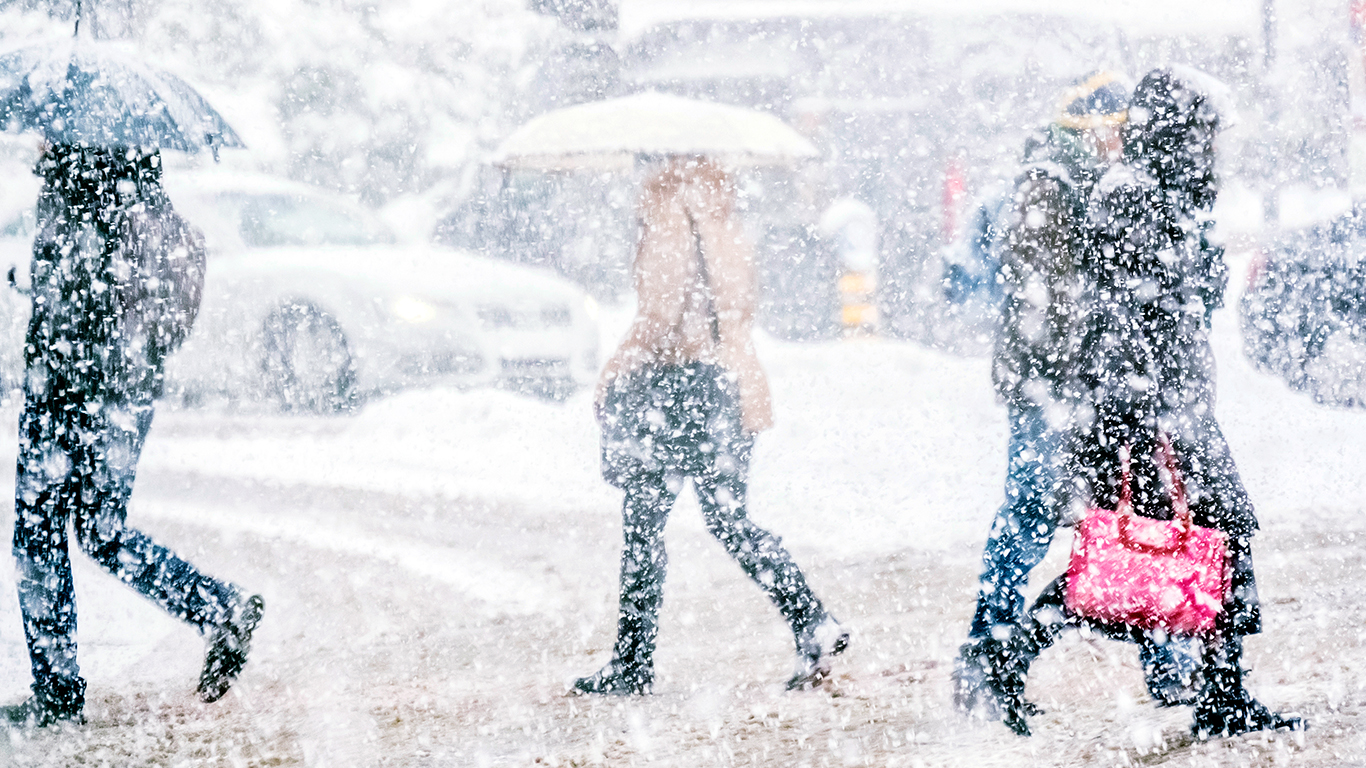
Published:

On Feb. 20, President Biden declared the state of Texas the site of a major disaster, making available federal funding for the relief of the millions of Texans who have been without water, food, electricity and even shelter in freezing conditions. The crisis in Texas came as a result of Winter Storm Uri, which swept across the United States, setting thousands of single-day cold or snowfall records, leaving nearly 10 million people without power and killing at least 70.
Unlike hurricanes and earthquakes, there is no widely used scale or index for assessing the impact of snowstorms. In recent years, however, the meteorological community has made several successful attempts to establish a standard for measuring the impact of extreme snow events that can be used to compare snowstorms over time.
The Regional Snowfall Index, introduced in 2014, ranks a snowstorm impact on a scale of 1 to 5 using data on a storm’s area of snowfall, the amount of snowfall and the population affected. The RSI has since been used to retroactively classify nearly 600 snowstorms that occurred between 1900 and 2013.
To determine the worst blizzard of all time, 24/7 Wall St. ranked snowstorms based on their RSI values, as published by the National Oceanic and Atmospheric Administration (NOAA) National Centers for Environmental Information. As finalists to determine the worst blizzard, we included the 25 snowstorms designated as Category 5 since 1900. Data on duration, region, affected area and affected population also came from the NOAA. 24/7 Wall St. combined data on affected area and population for Category 5 storms that spanned multiple regions, considering it one event. Storm names, as well as measures of snowfall in the affected areas, came from various news and media sources.
The worst blizzard of all time is called the “White Hurricane.” It lasted from January 23, 1978, through January 28, 1978. The storm covered much of the Upper Midwest, with a total affected area of 233,580 square miles. Some 23.6 million people were affected. Among the hardest-hit cities by total snowfall was Dayton, Ohio, which received 12.9 inches.
Click here to see the worst blizzards of all time.
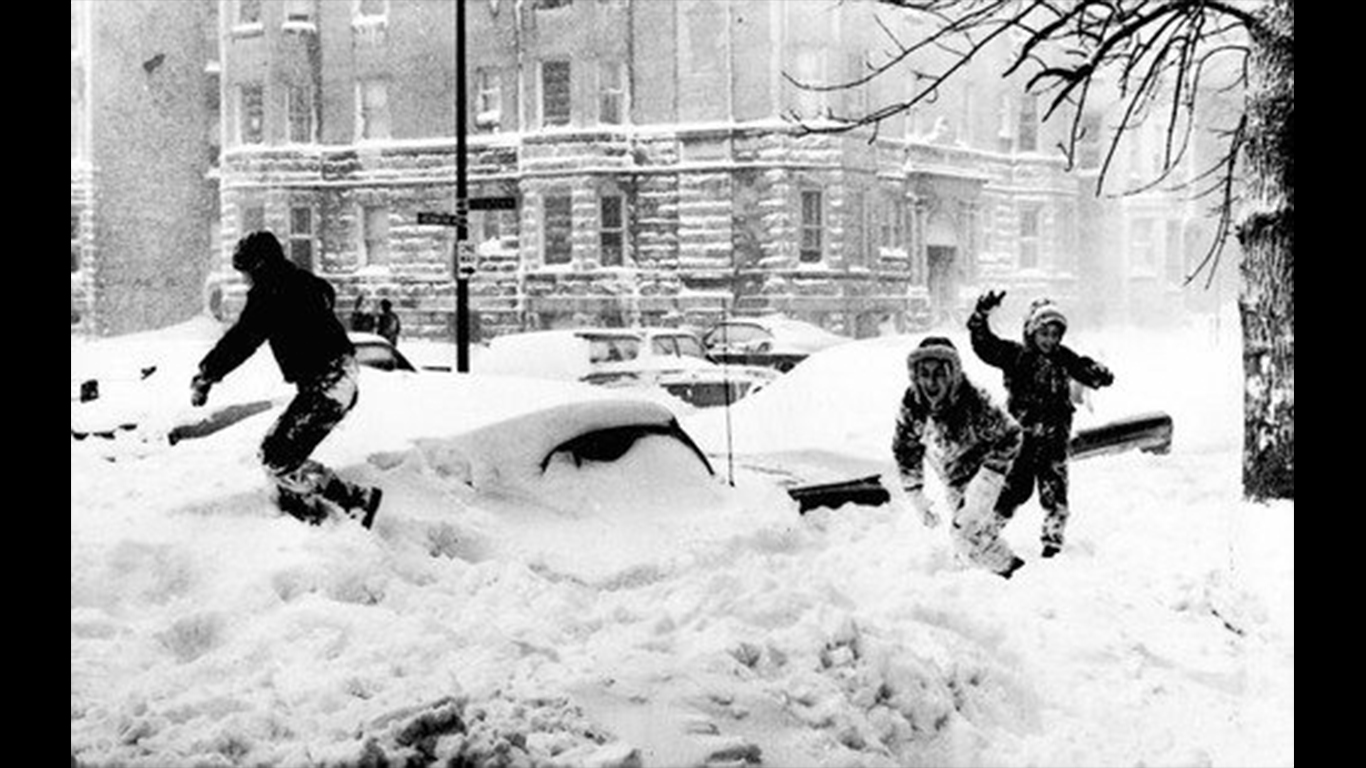
25. The Chicago Blizzard of 1967
> Duration: Jan. 25, 1967 – Jan. 29, 1967
> Region: Ohio Valley
> Affected area: 286,503 square miles
> Population affected: 46.1 million
> Notable snowfall: 23 inches (Chicago, IL)
[in-text-ad]
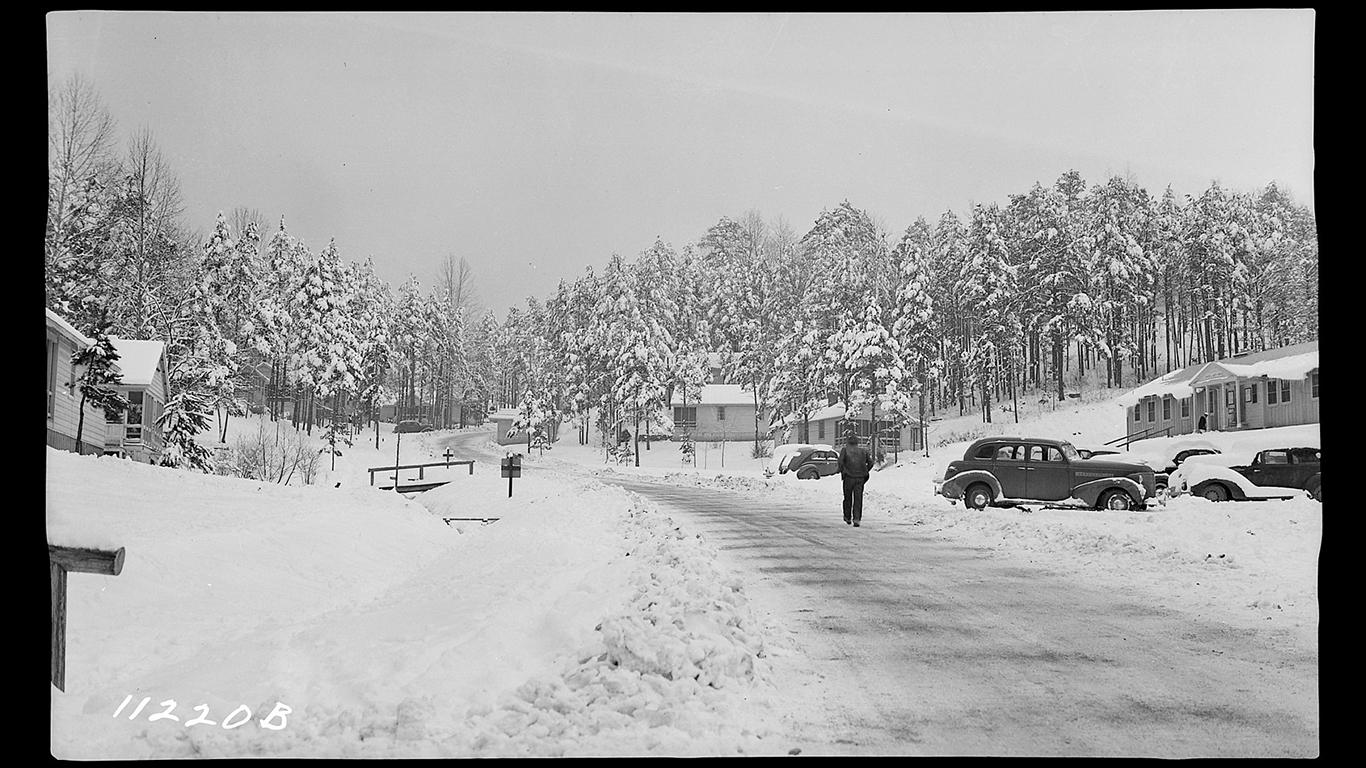
24. The Great Atlanta Blizzard
> Duration: Jan. 21, 1940 – Jan. 24, 1940
> Region: Southeast
> Affected area: 214,946 square miles
> Population affected: 35.6 million
> Notable snowfall: 21.6 inches (Richmond, VA)
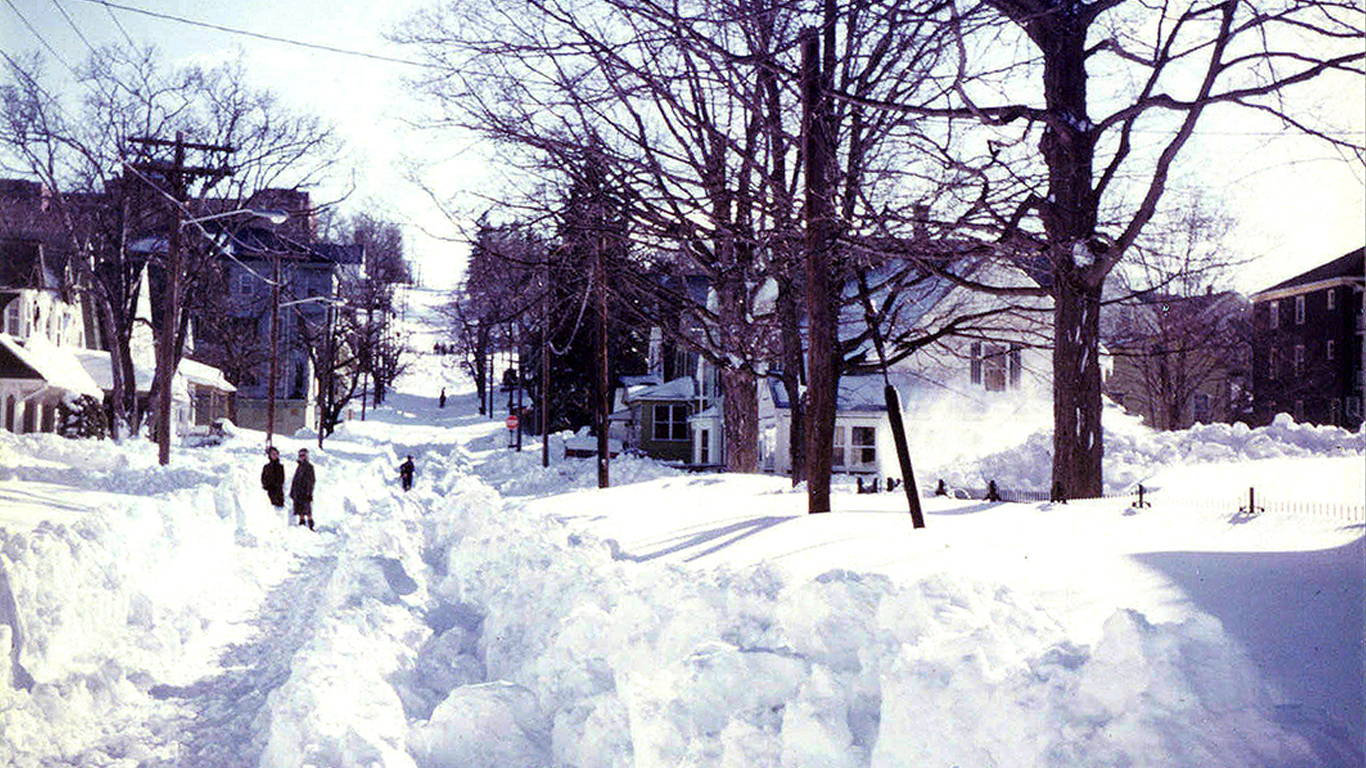
23. The Blizzard of 1978
> Duration: Feb. 4, 1978 – Feb. 8, 1978
> Region: Northeast
> Affected area: 174,950 square miles
> Population affected: 58.9 million
> Notable snowfall: 55 inches (Lincoln, RI)
[in-text-ad-2]
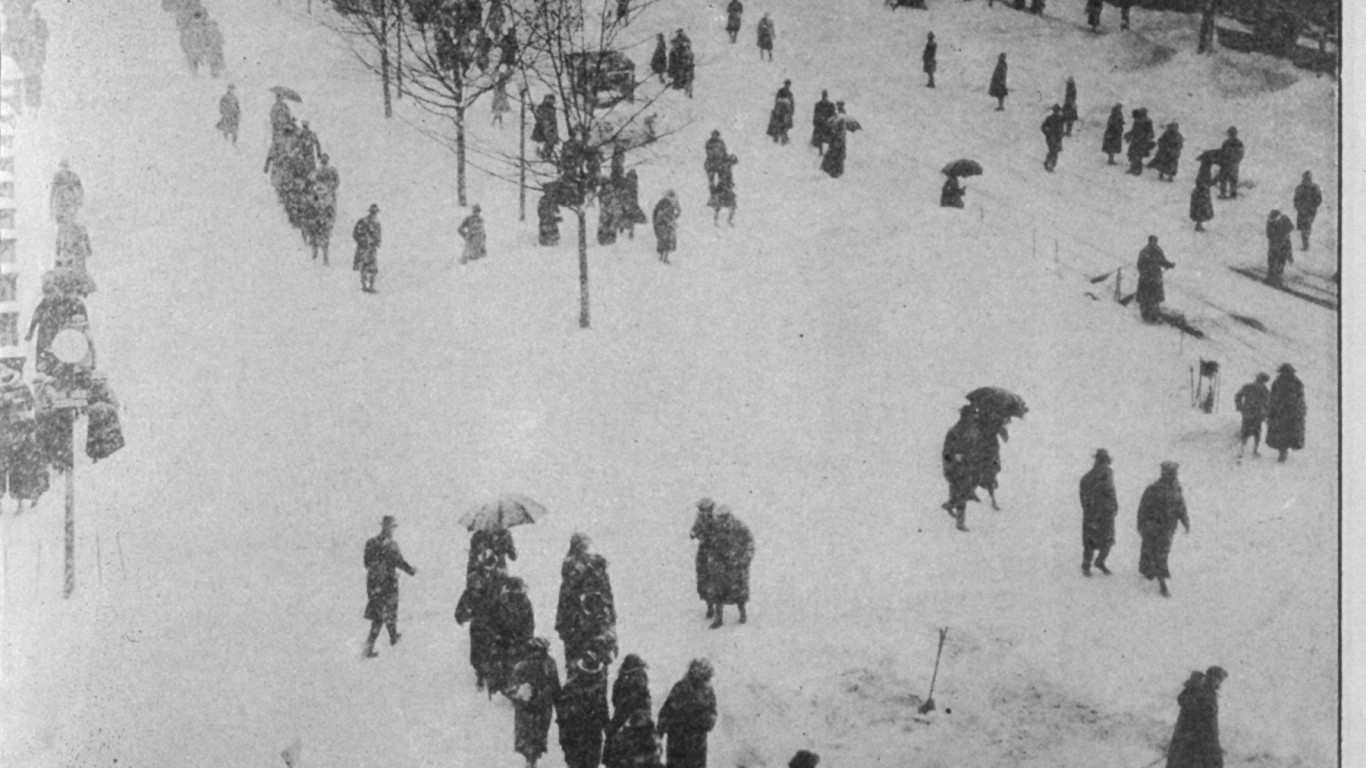
22. The Knickerbocker Storm
> Duration: Jan. 26, 1922 – Jan. 30, 1922
> Region: Southeast
> Affected area: 150,041 square miles
> Population affected: 30.1 million
> Notable snowfall: 28 inches (Washington, D.C.)
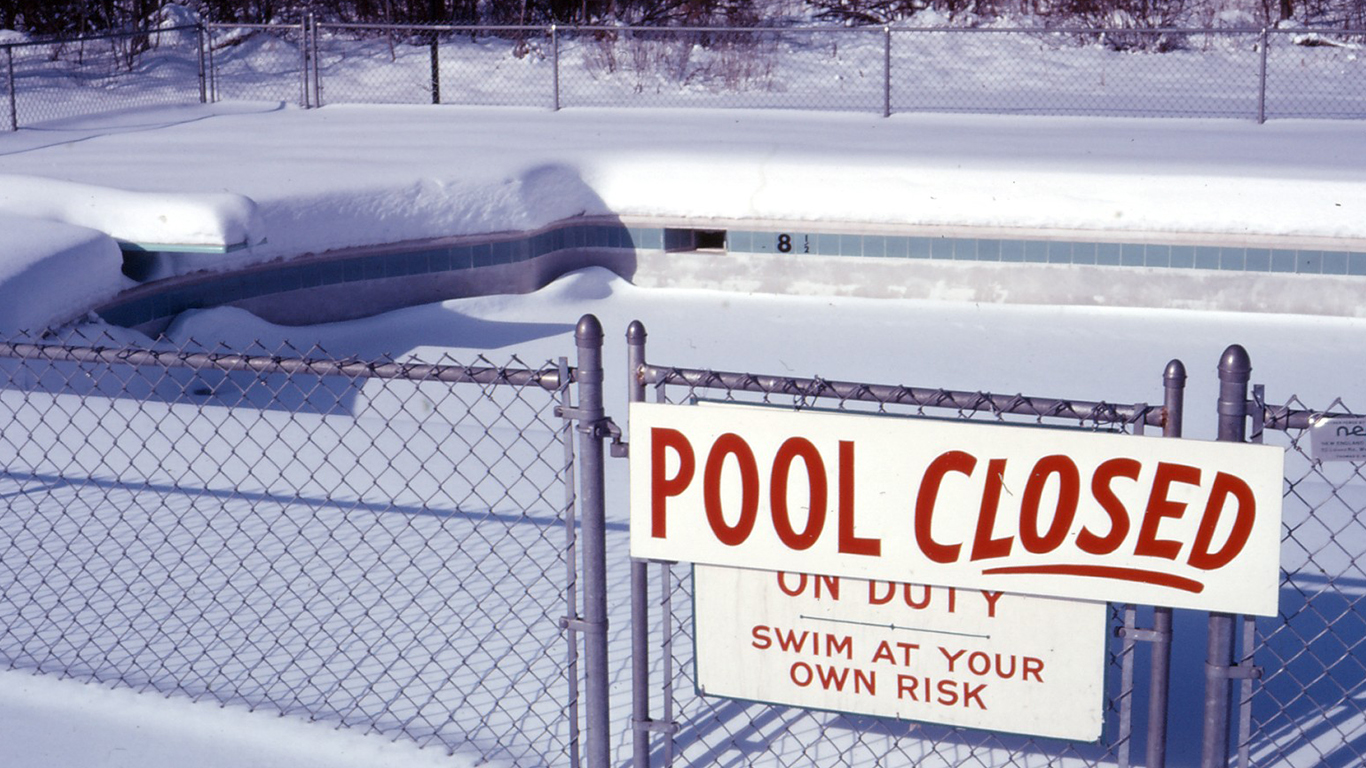
21. The Blizzard of 1971
> Duration: Feb. 19, 1971 – Feb. 24, 1971
> Region: South
> Affected area: 261,324 square miles
> Population affected: 10.5 million
> Notable snowfall: N/A
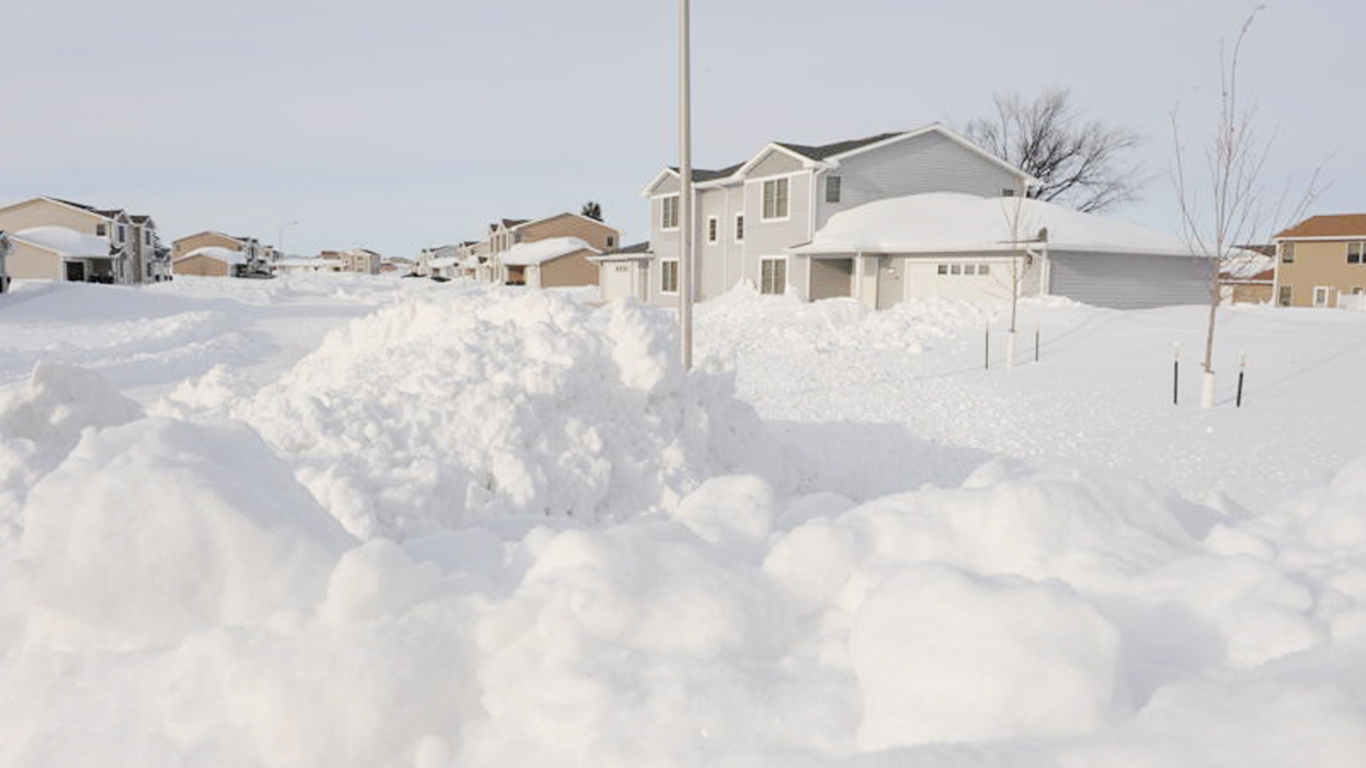
20. The 2009 Christmas Blizzard
> Duration: Dec. 22, 2009 – Dec. 29, 2009
> Region: Northern Rockies and Plains
> Affected area: 466,690 square miles
> Population affected: 4.8 million
> Notable snowfall: 15.7 inches (Osceola, NE)
[in-text-ad]
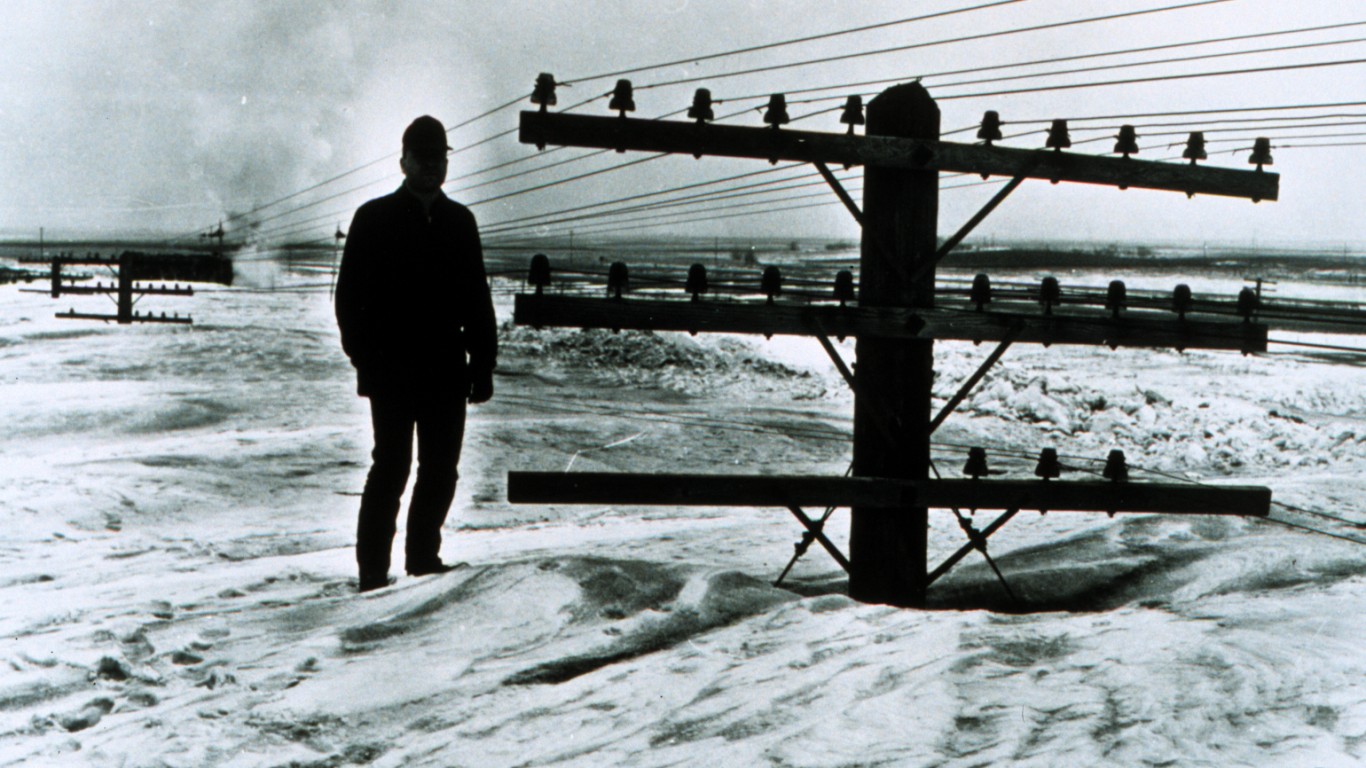
19. The Blizzard of 1966
> Duration: Feb. 28, 1966 – Mar. 6, 1966
> Region: Northern Rockies and Plains
> Affected area: 466,796 square miles
> Population affected: 4.8 million
> Notable snowfall: 30.5 inches (Devils Lake, ND)
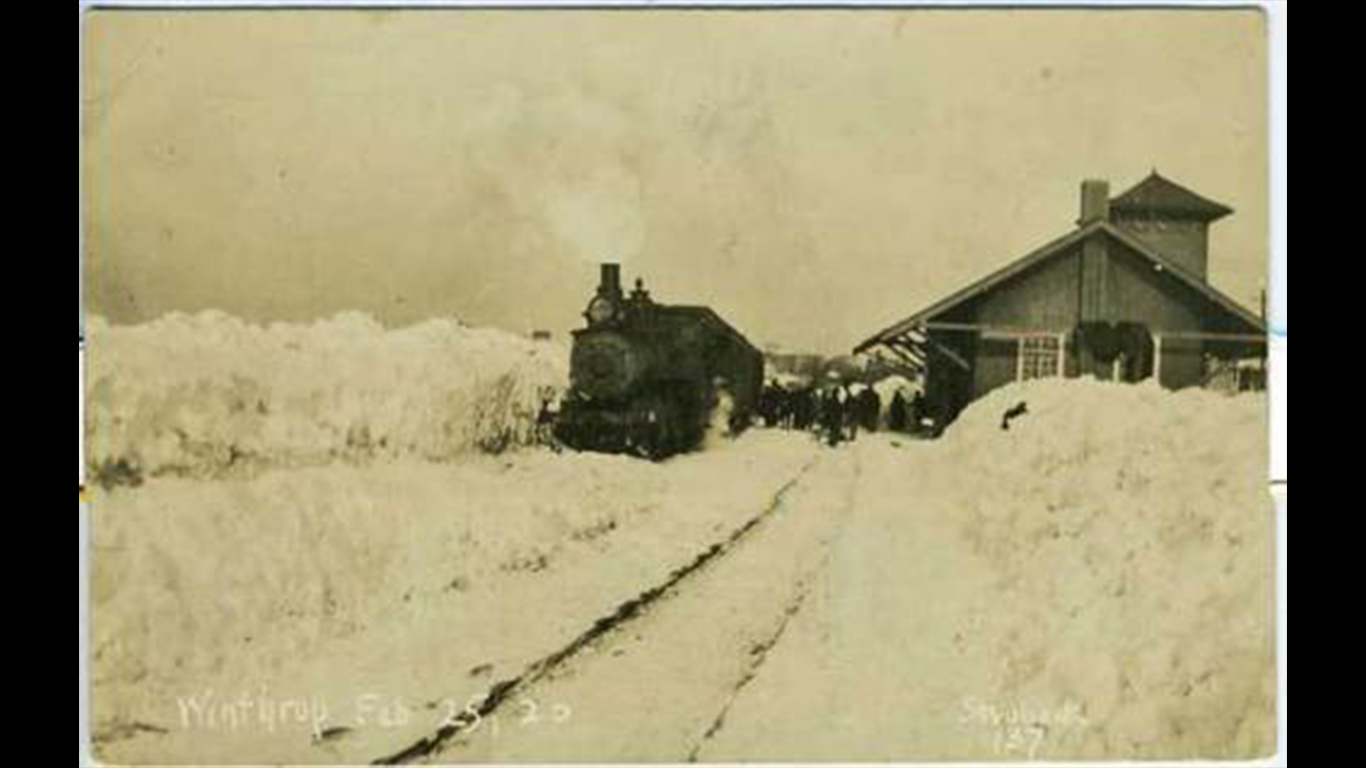
18. The Blizzard of 1920
> Duration: Apr. 15, 1920 – Apr. 19, 1920
> Region: Northern Rockies and Plains
> Affected area: 350,813 square miles
> Population affected: 2.4 million
> Notable snowfall: 28.3 inches (Denver, CO)
[in-text-ad-2]
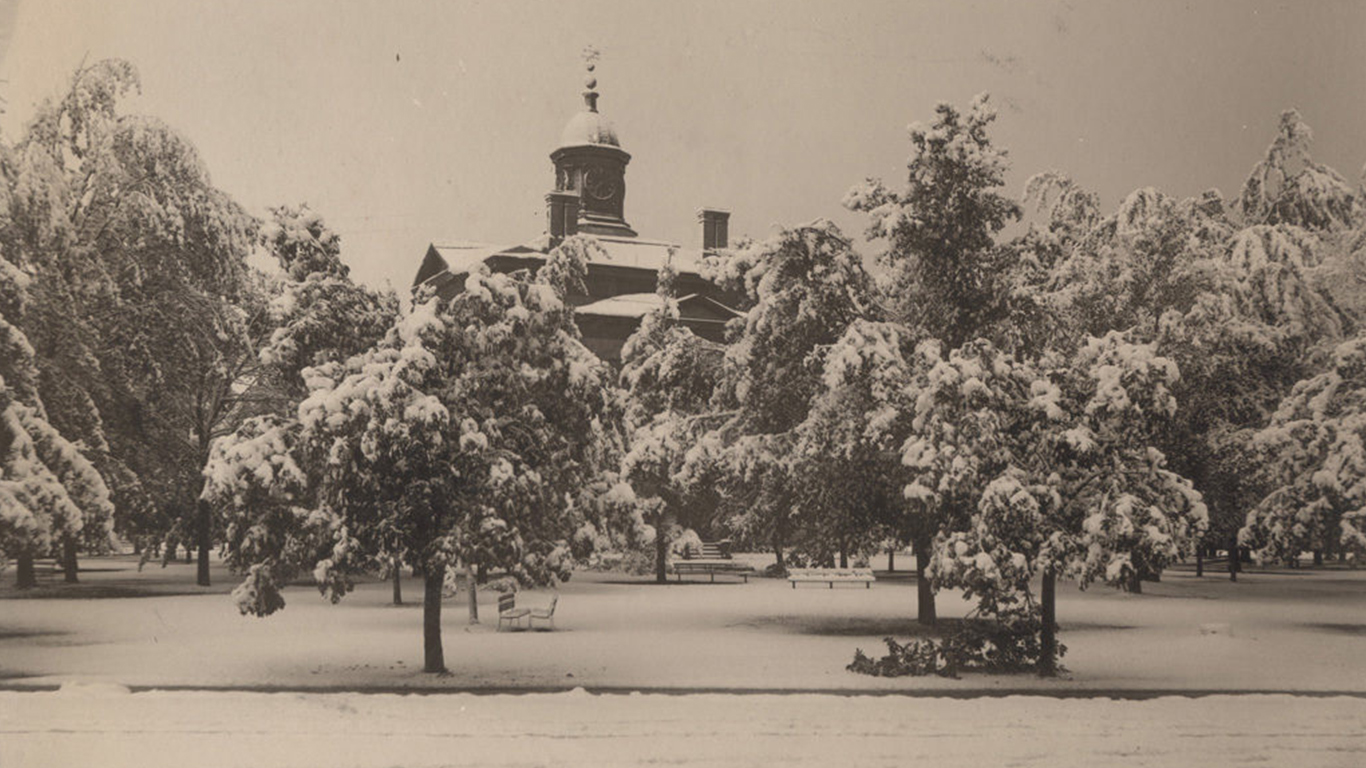
17. The Historic Texas Snowstorm
> Duration: Dec. 19, 1929 – Dec. 24, 1929
> Region: South
> Affected area: 380,488 square miles
> Population affected: 31.2 million
> Notable snowfall: 26 inches (Hillsboro, TX)
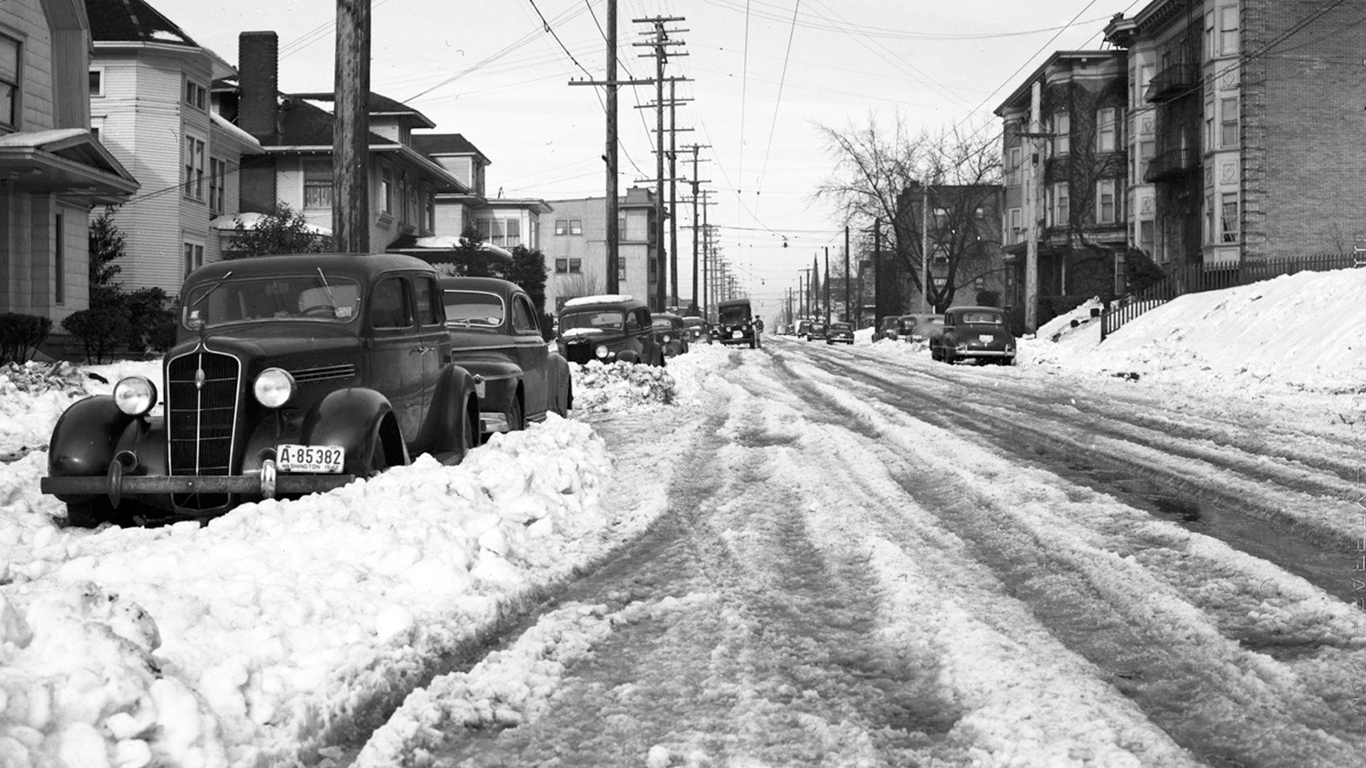
16. The Blizzard of 1943
> Duration: Jan. 19, 1943 – Jan. 26, 1943
> Region: Northern Rockies and Plains
> Affected area: 358,424 square miles
> Population affected: 3.1 million
> Notable snowfall: 14.4 inches (Portland, OR)
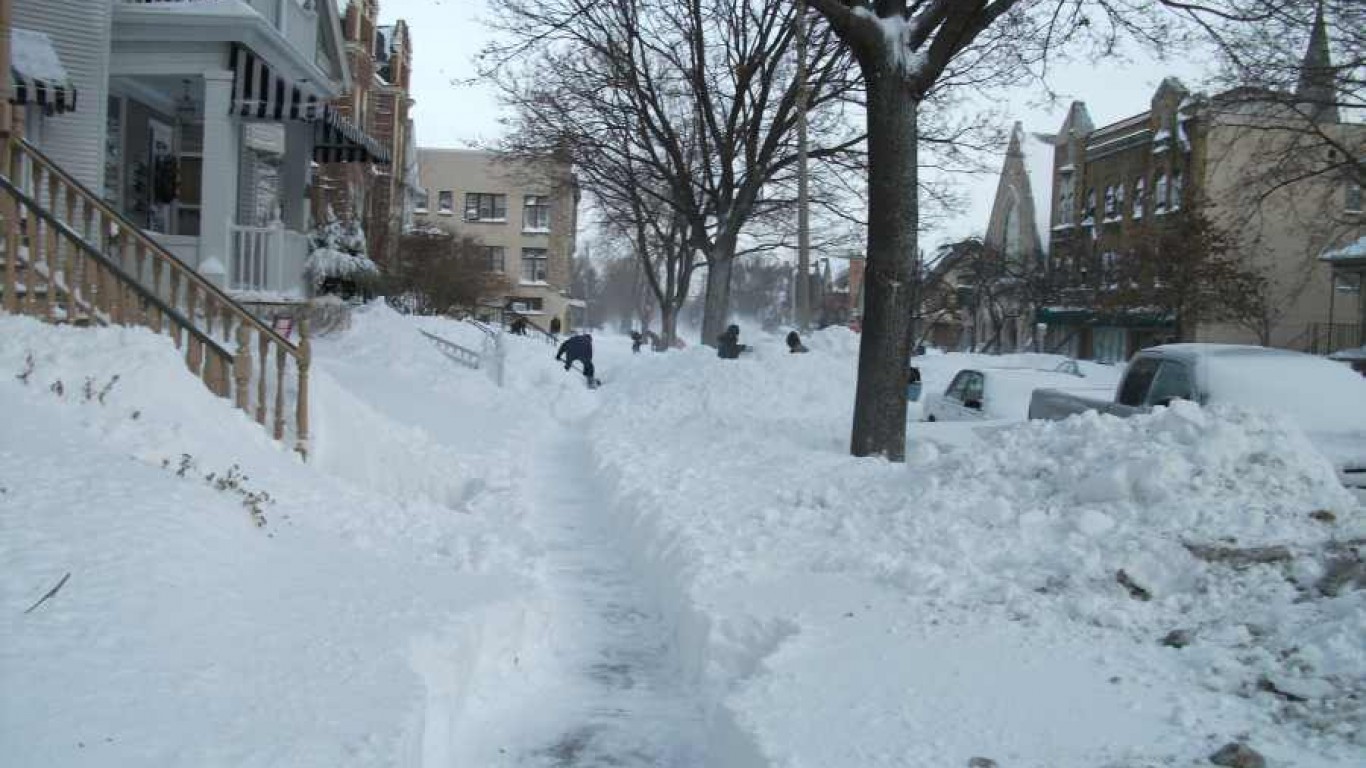
15. The Groundhog Day Blizzard
> Duration: Feb. 1, 2011 – Feb. 4, 2011
> Region: Ohio Valley
> Affected area: 241,595 square miles
> Population affected: 41.3 million
> Notable snowfall: 23.5 inches (Racine, WI)
[in-text-ad]
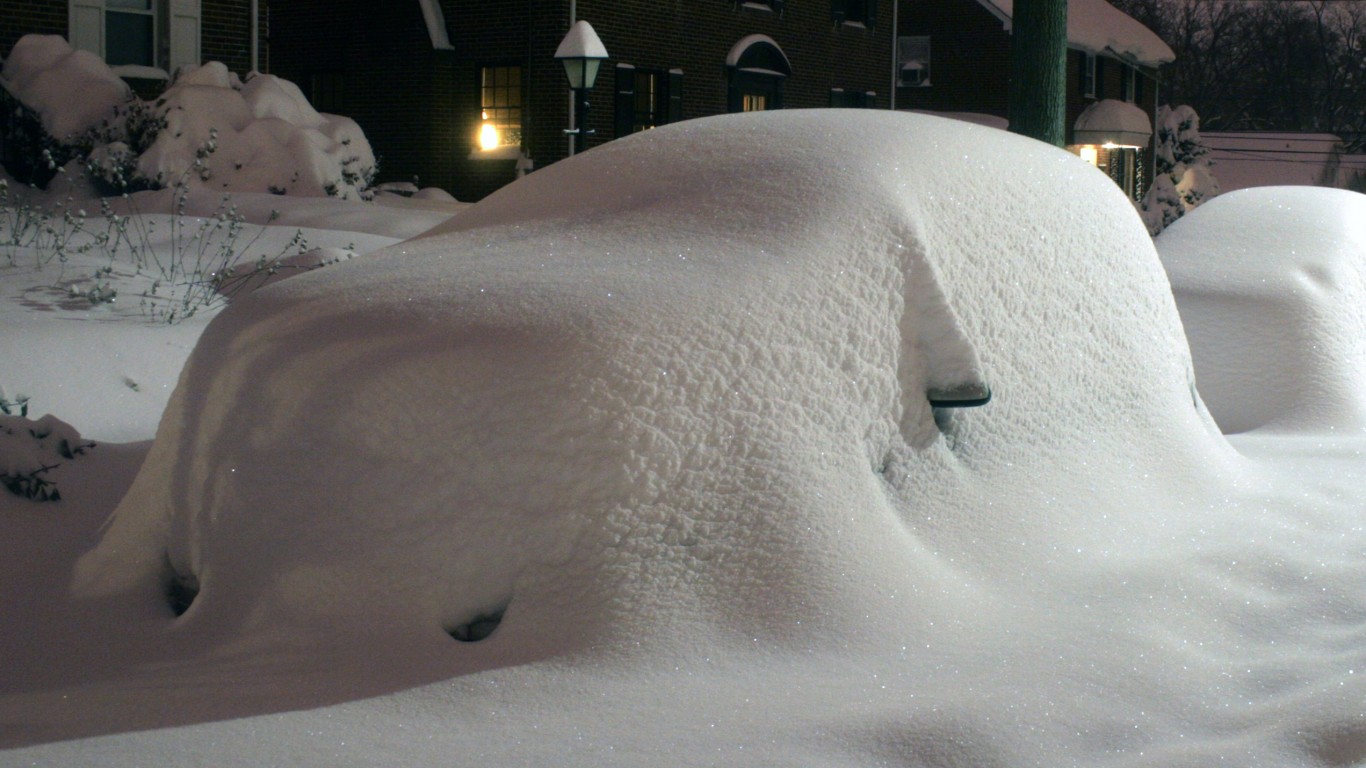
14. The Blizzard of 1993
> Duration: Nov. 21, 1993 – Nov. 29, 1993
> Region: Northern Rockies and Plains
> Affected area: 468,083 square miles
> Population affected: 4.8 million
> Notable snowfall: NA
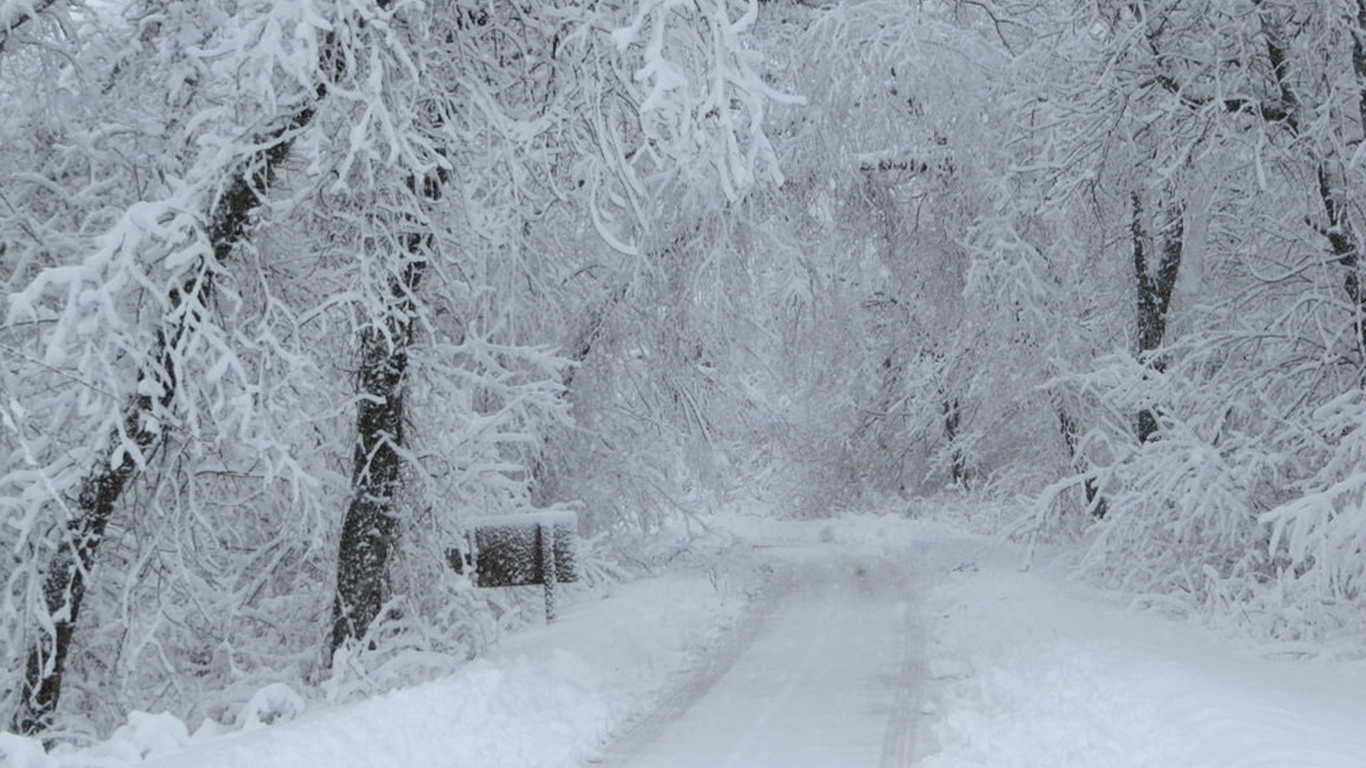
13. The Post-Thanksgiving Day Storm of 1985
> Duration: Nov. 28, 1985 – Dec. 2, 1985
> Region: Upper Midwest
> Affected area: 251,618 square miles
> Population affected: 23.9 million
> Notable snowfall: 30 inches (Marquette, WI)
[in-text-ad-2]
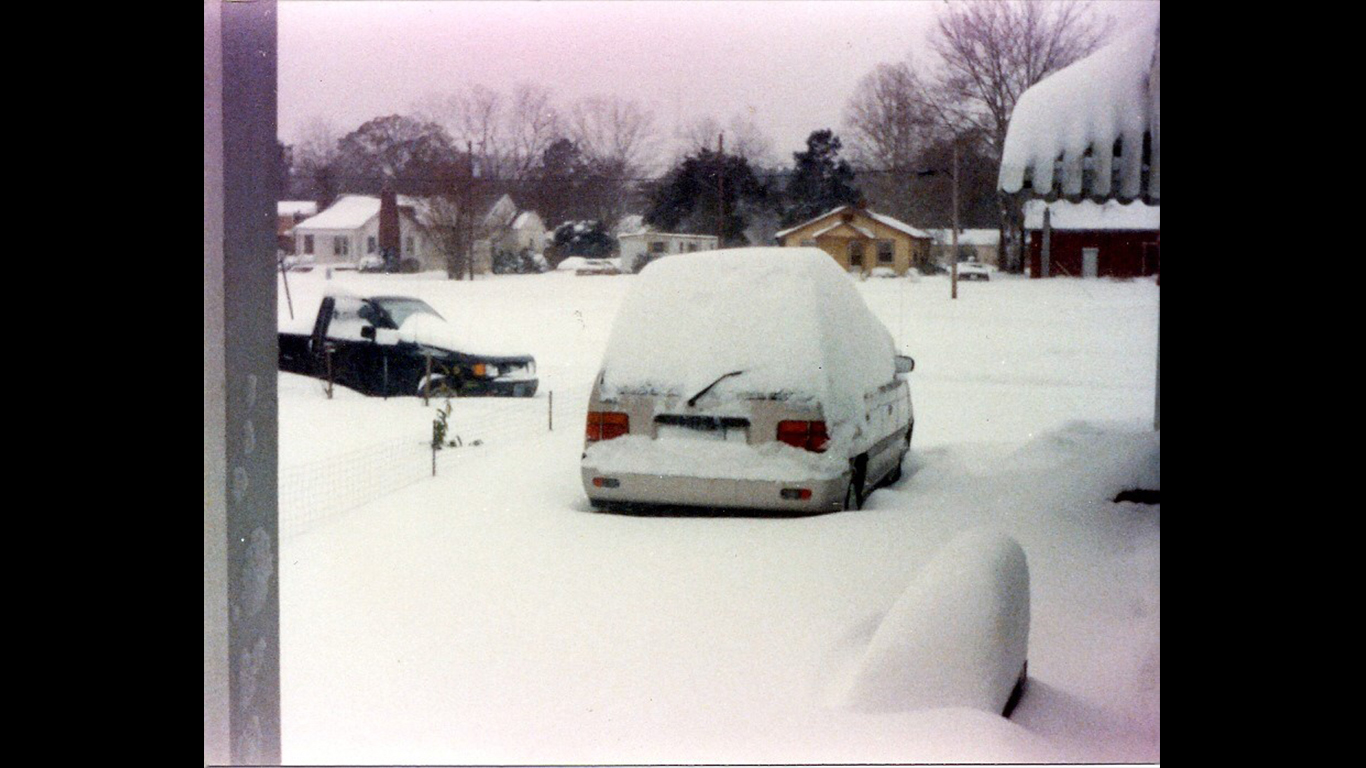
12. The Blizzard of 1988
> Duration: Jan. 5, 1988 – Jan. 9, 1988
> Region: South
> Affected area: 369,821 square miles
> Population affected: 22.3 million
> Notable snowfall: 20 inches (Macon County, NC)
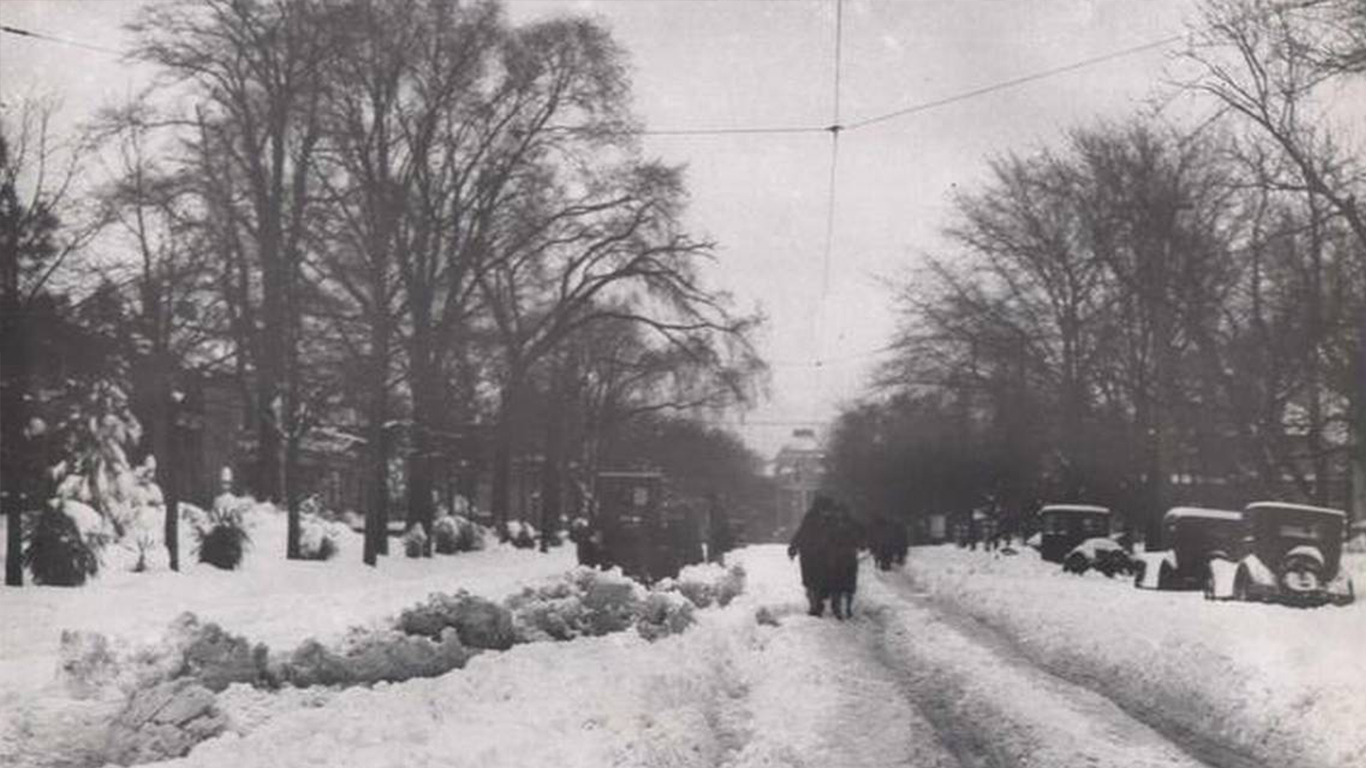
11. The Blizzard of 1927, Southeastern United States
> Duration: Feb. 27, 1927 – Mar. 3, 1927
> Region: Southeast
> Affected area: 142,285 square miles
> Population affected: 26.5 million
> Notable snowfall: 30-40 inches (Wilson, NC)
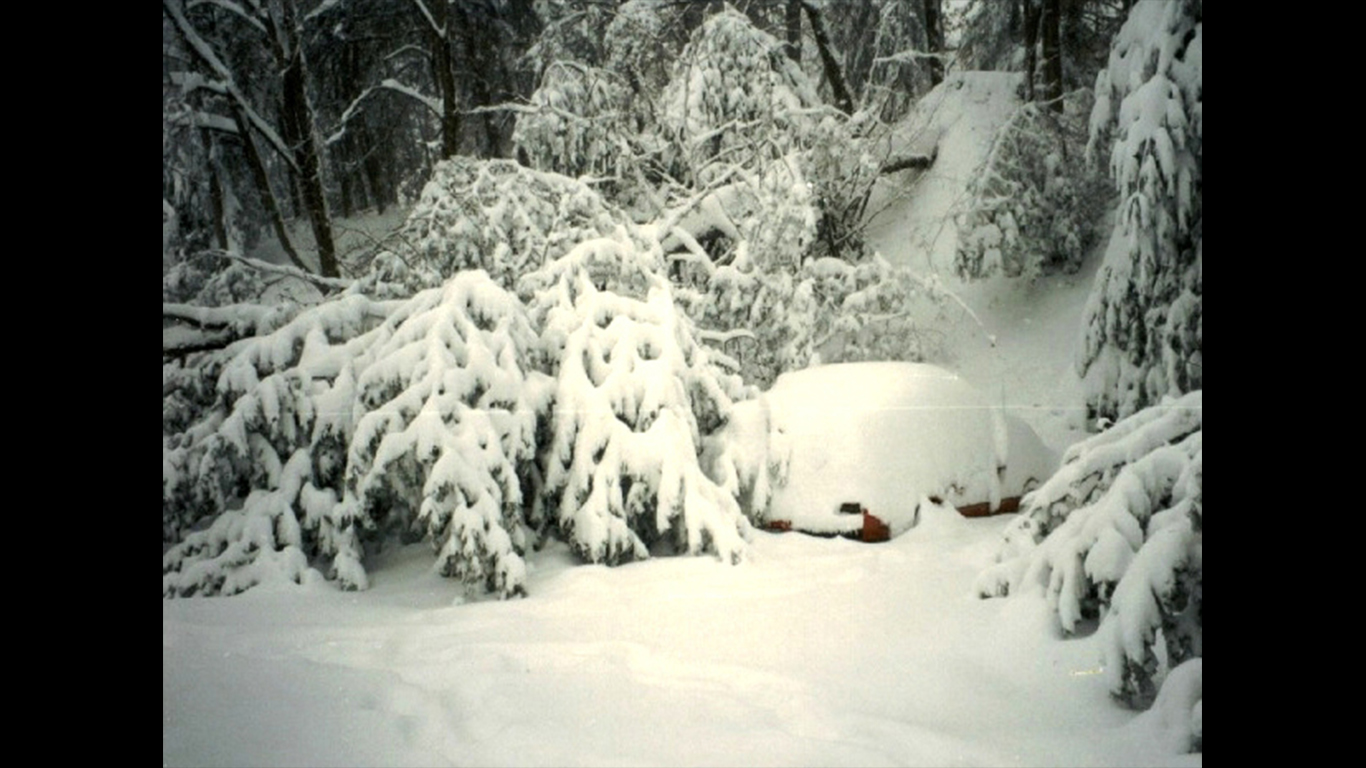
10. The Storm of the Century
> Duration: Mar. 12, 1993 – Mar. 15, 1993
> Region: Ohio Valley, Southeast, Northeast
> Affected area: 551,948 square miles
> Population affected: 120.8 million
> Notable snowfall: 56 inches (Mount LeConte, TN)
[in-text-ad]
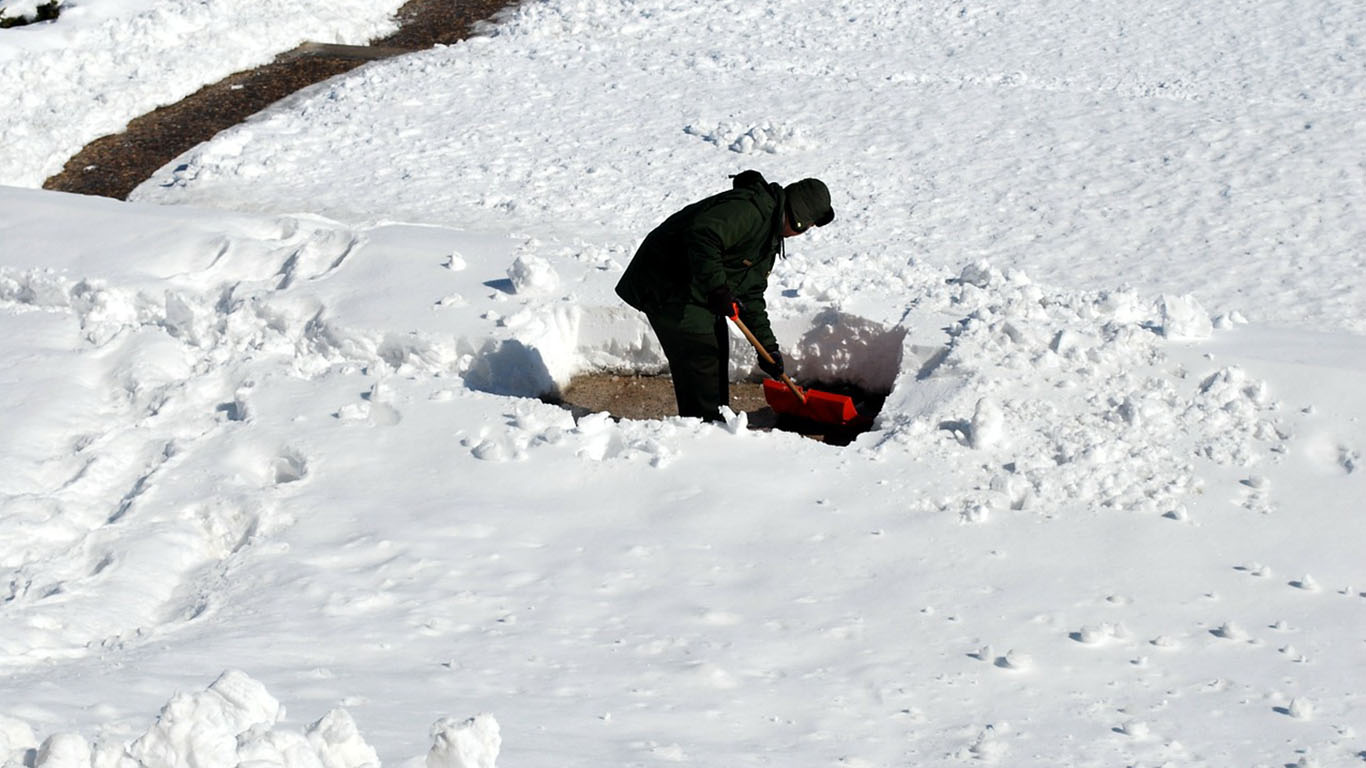
9. The Blizzard of 1984
> Duration: Apr. 25, 1984 – Apr. 28, 1984
> Region: Northern Rockies and Plains
> Affected area: 418,380 square miles
> Population affected: 3.1 million
> Notable snowfall: 24 inches (Campbell County, WY)
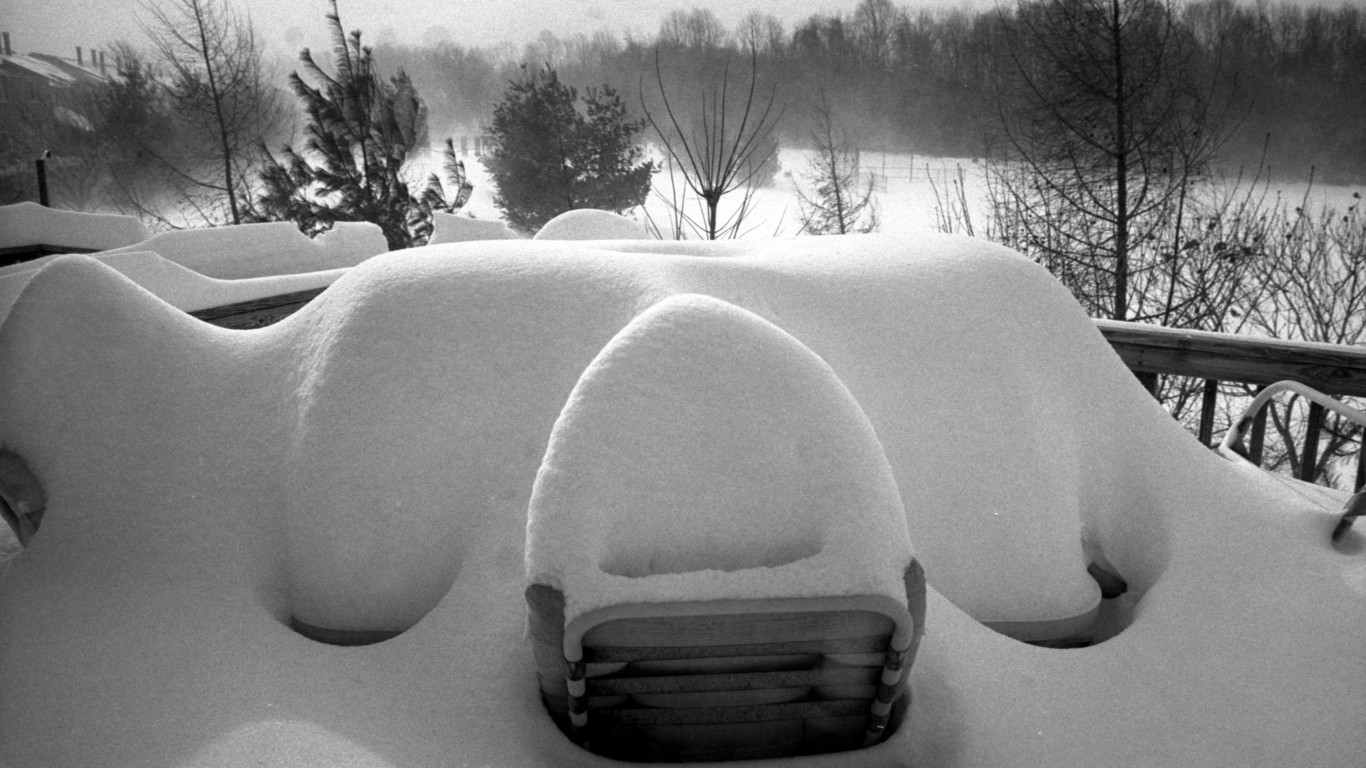
8. The Blizzard of 1996
> Duration: Jan. 6, 1996 – Jan. 9, 1996
> Region: Southeast, Northeast
> Affected area: 331,486 square miles
> Population affected: 89.5 million
> Notable snowfall: 26.6 inches (Baltimore, MD)
[in-text-ad-2]
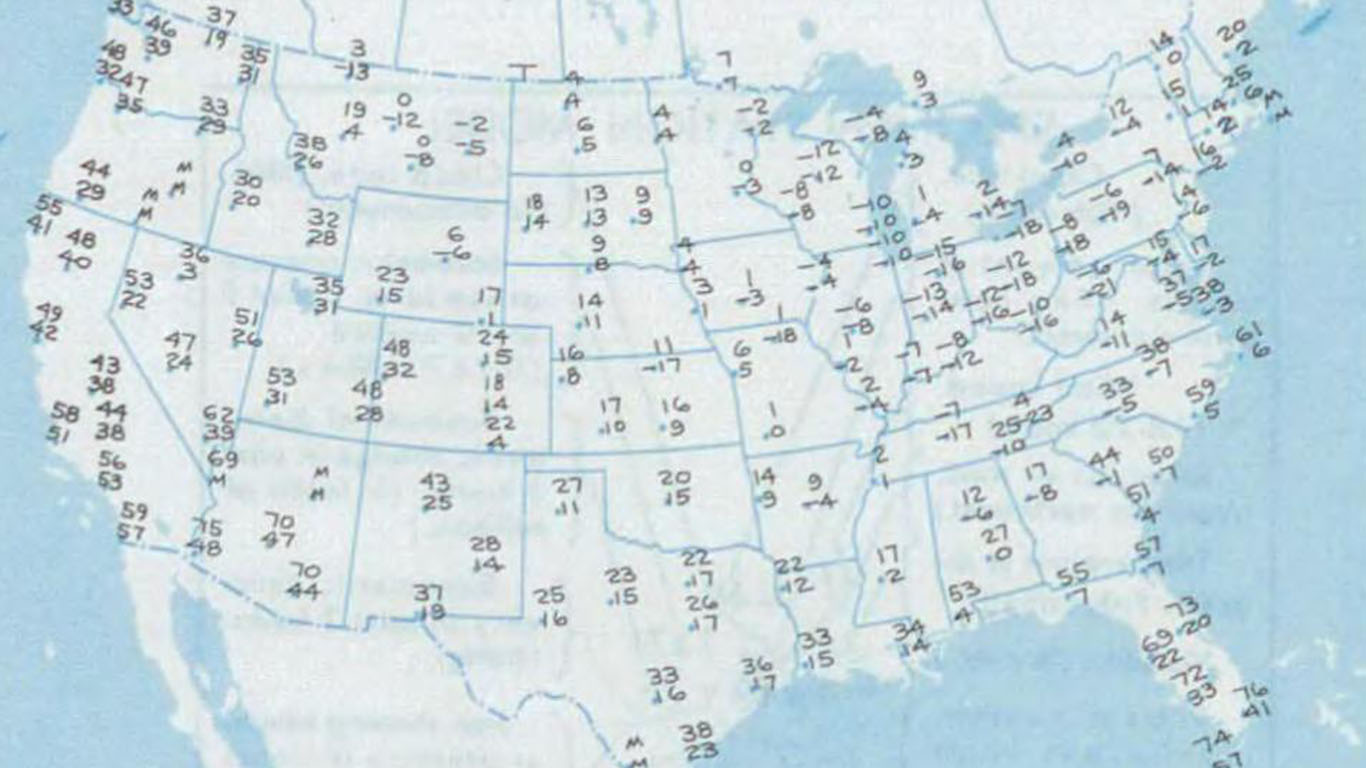
7. The Great Cold Outbreak of 1985
> Duration: Feb. 7, 1985 – Feb. 15, 1985
> Region: Upper Midwest
> Affected area: 252,012 square miles
> Population affected: 23.9 million
> Notable snowfall: N/A
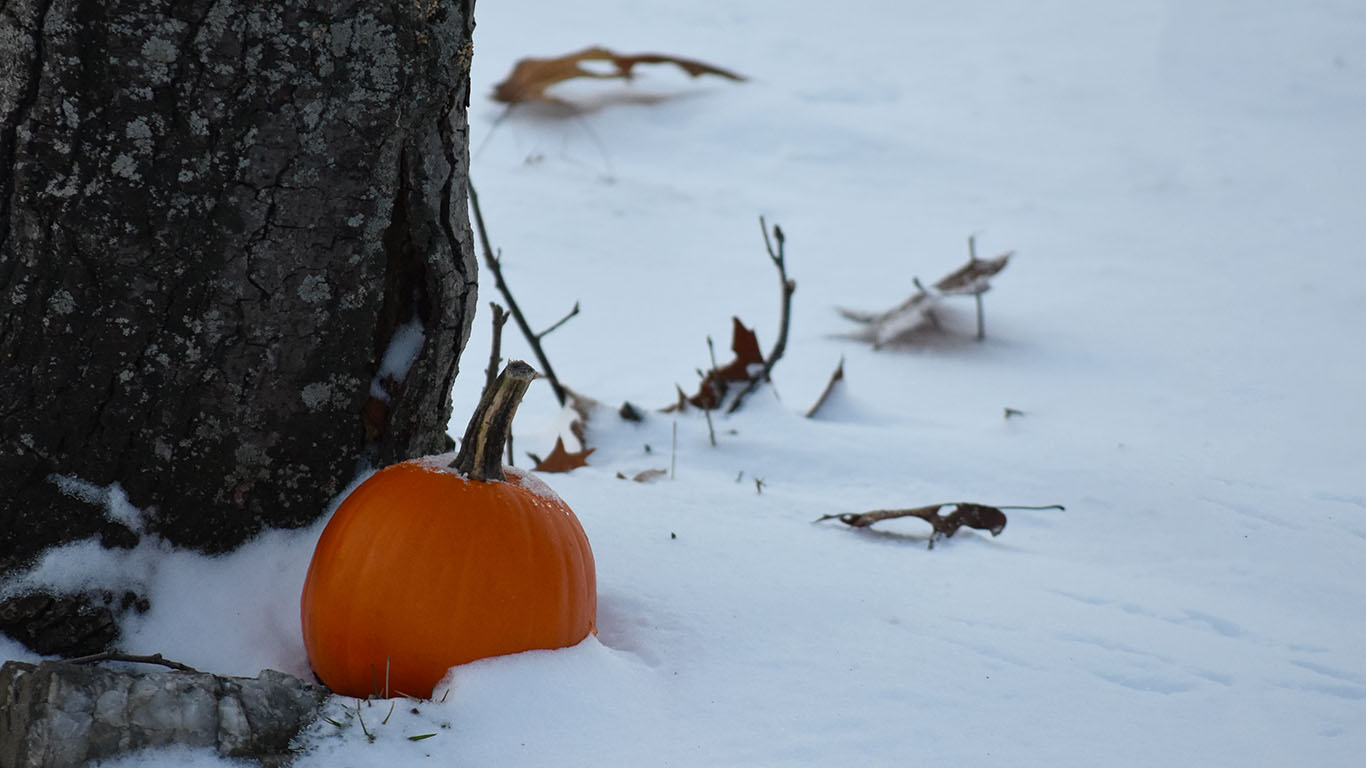
6. The Halloween Blizzard of 1991
> Duration: Oct. 31, 1991 – Nov. 4, 1991
> Region: Upper Midwest
> Affected area: 251,176 square miles
> Population affected: 23.5 million
> Notable snowfall: 28 inches (Twin Cities, MN)
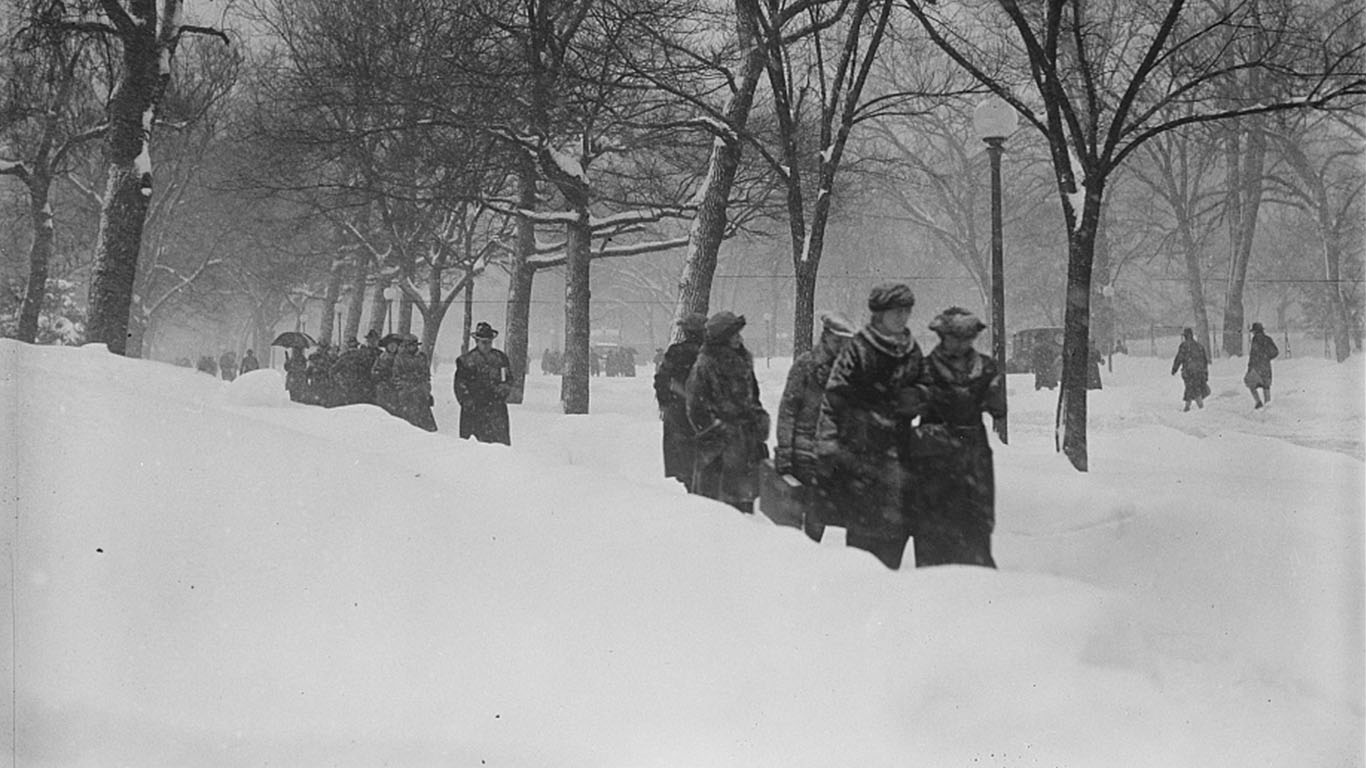
5. The Blizzard of 1921
> Duration: Feb. 18, 1921 – Feb. 22, 1921
> Region: South
> Affected area: 256,548 square miles
> Population affected: 16.7 million
> Notable snowfall: N/A
[in-text-ad]
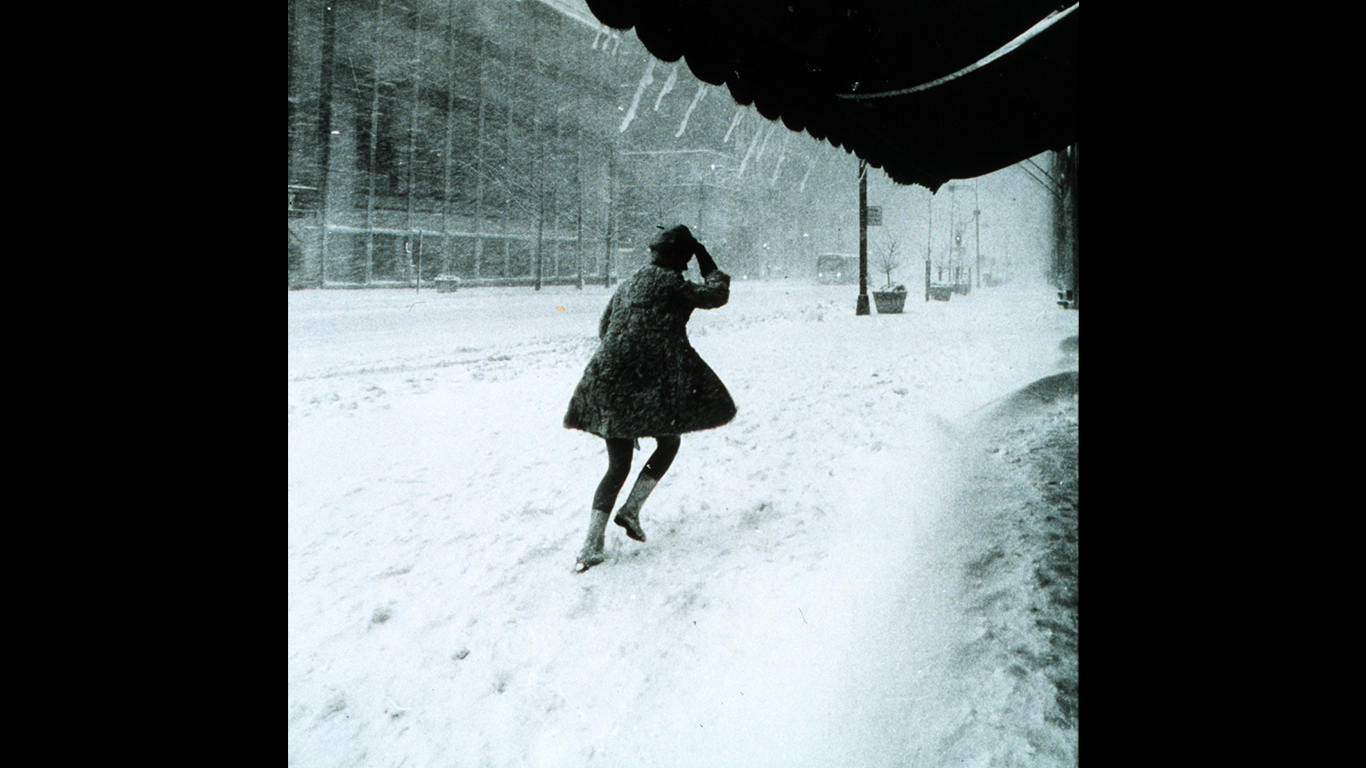
4. The 100-Hour Snowstorm of February 1969
> Duration: Feb. 22, 1969 – Feb. 28, 1969
> Region: Northeast
> Affected area: 174,950 square miles
> Population affected: 58.9 million
> Notable snowfall: 77 inches (Coos County, NH)
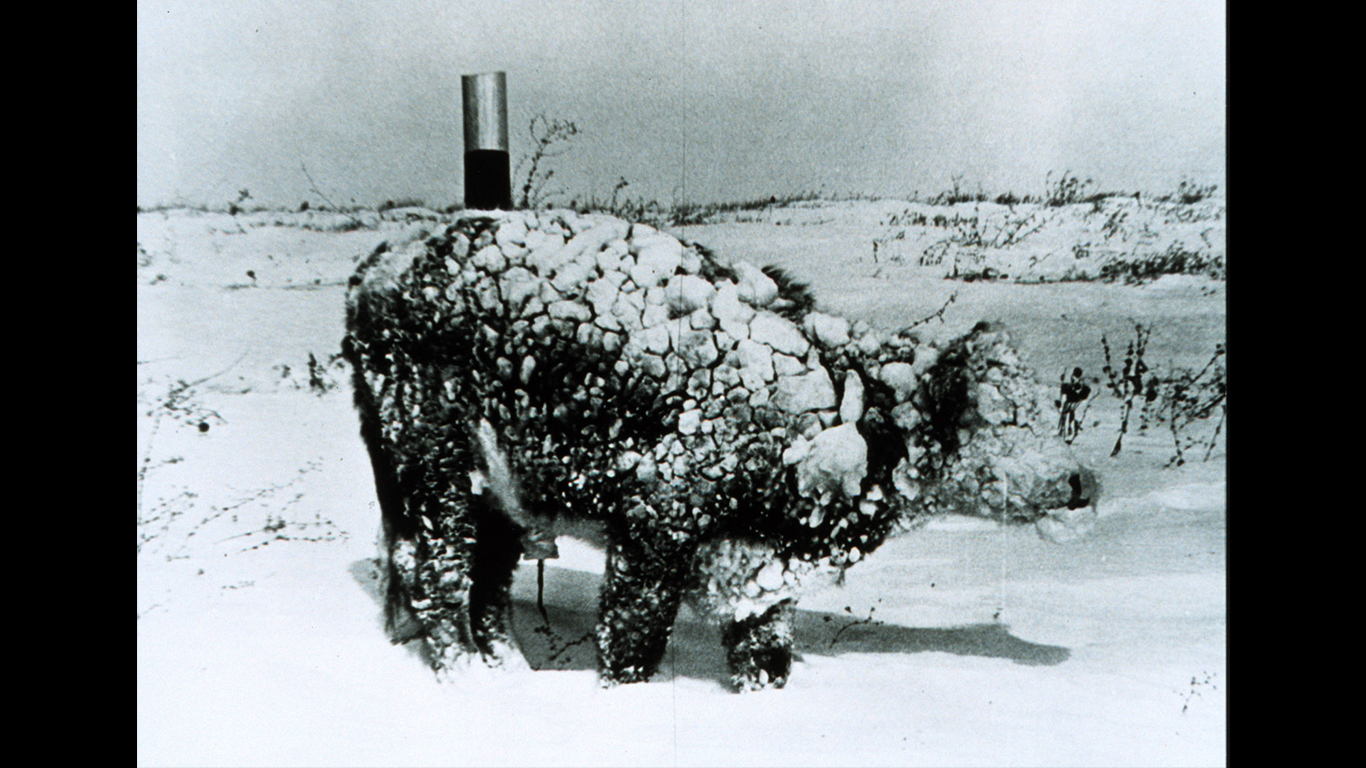
3. The Blizzard of 1927, Northern Rockies
> Duration: Apr. 10, 1927 – Apr. 15, 1927
> Region: Northern Rockies and Plains
> Affected area: 335,119 square miles
> Population affected: 2.1 million
> Notable snowfall: N/A
[in-text-ad-2]
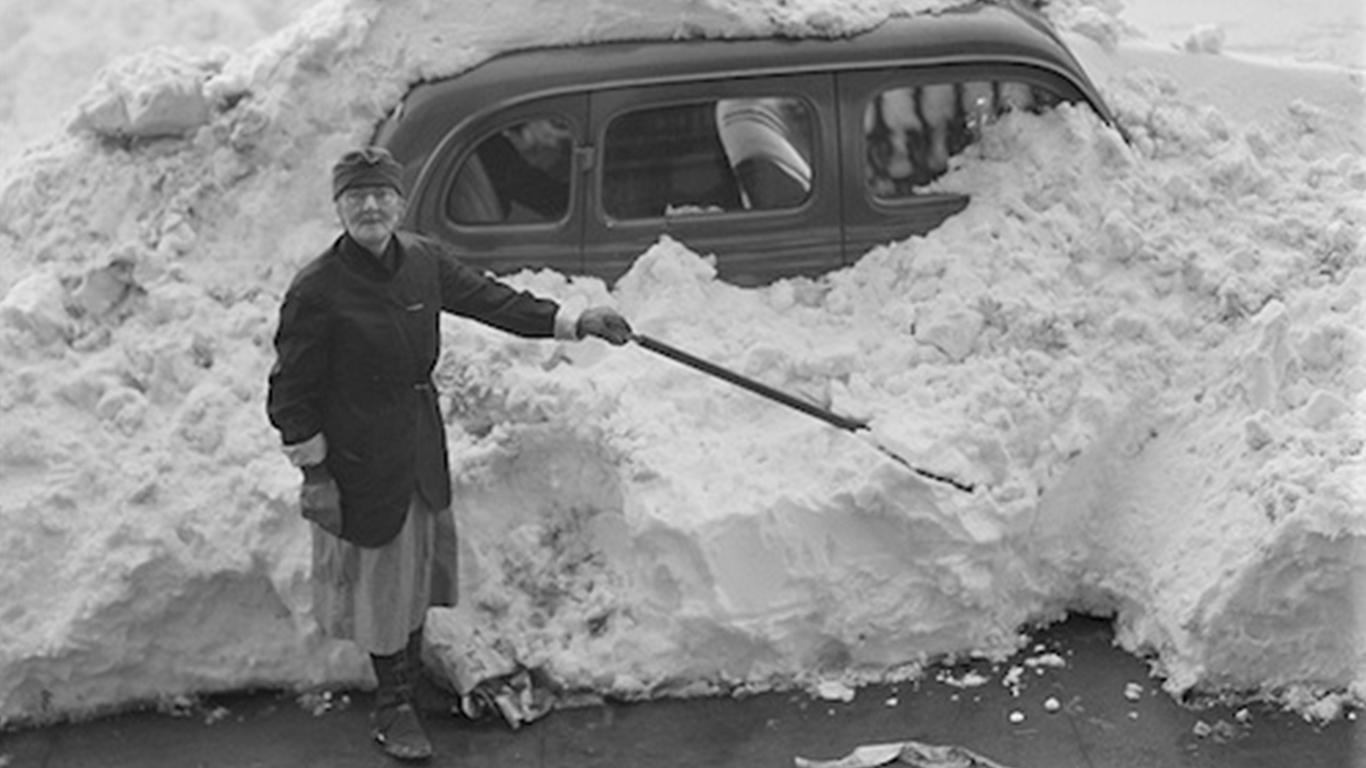
2. The Great Appalachian Storm of 1950
> Duration: Nov. 22, 1950 – Nov. 30, 1950
> Region: Ohio Valley
> Affected area: 308,845 square miles
> Population affected: 49.2 million
> Notable snowfall: 57 inches (Central Appalachia)
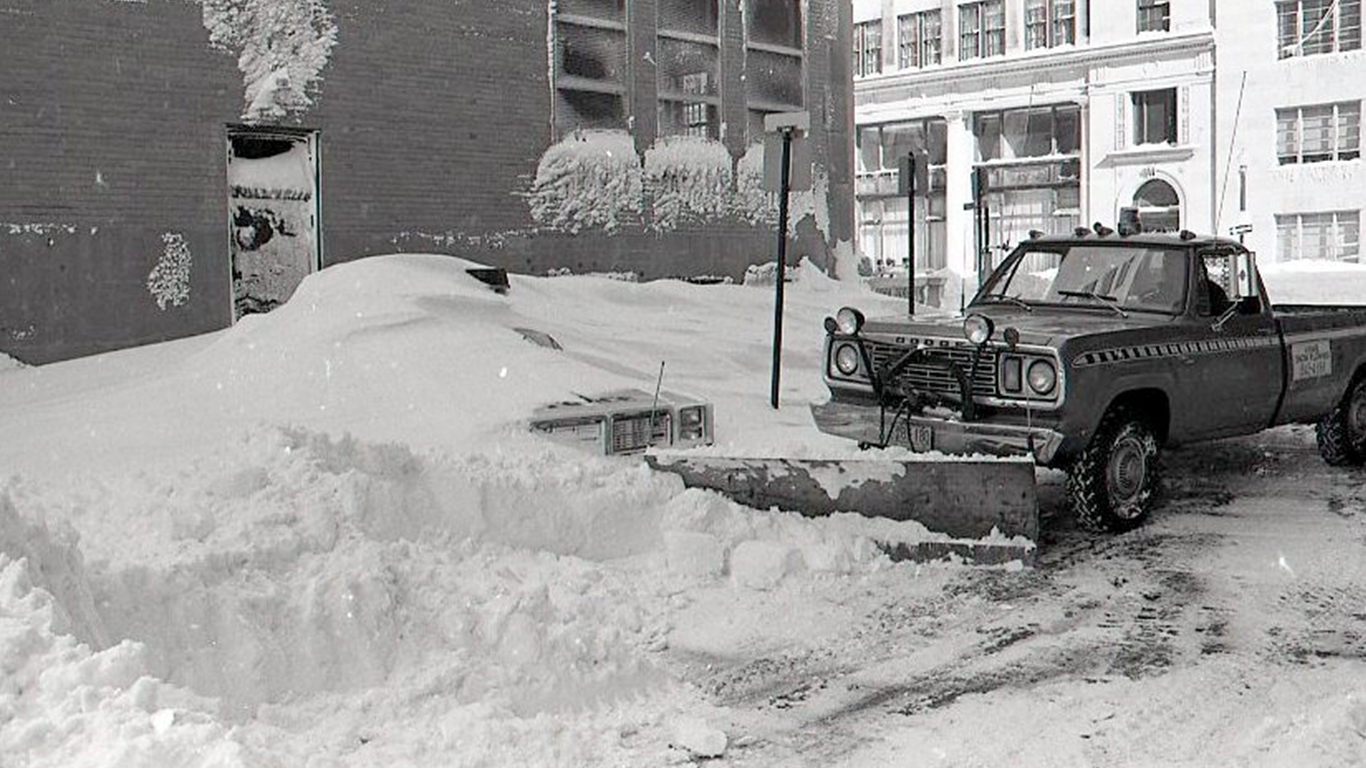
1. The White Hurricane
> Duration: Jan. 23, 1978 – Jan. 28, 1978
> Region: Upper Midwest
> Affected area: 233,580 square miles
> Population affected: 23.6 million
> Notable snowfall: 12.9 inches (Dayton, OH)
The last few years made people forget how much banks and CD’s can pay. Meanwhile, interest rates have spiked and many can afford to pay you much more, but most are keeping yields low and hoping you won’t notice.
But there is good news. To win qualified customers, some accounts are paying almost 10x the national average! That’s an incredible way to keep your money safe and earn more at the same time. Our top pick for high yield savings accounts includes other benefits as well. You can earn up to 3.80% with a Checking & Savings Account today Sign up and get up to $300 with direct deposit. No account fees. FDIC Insured.
Click here to see how much more you could be earning on your savings today. It takes just a few minutes to open an account to make your money work for you.
Thank you for reading! Have some feedback for us?
Contact the 24/7 Wall St. editorial team.